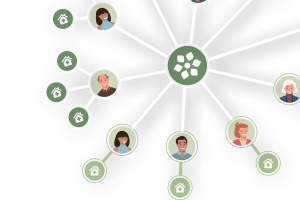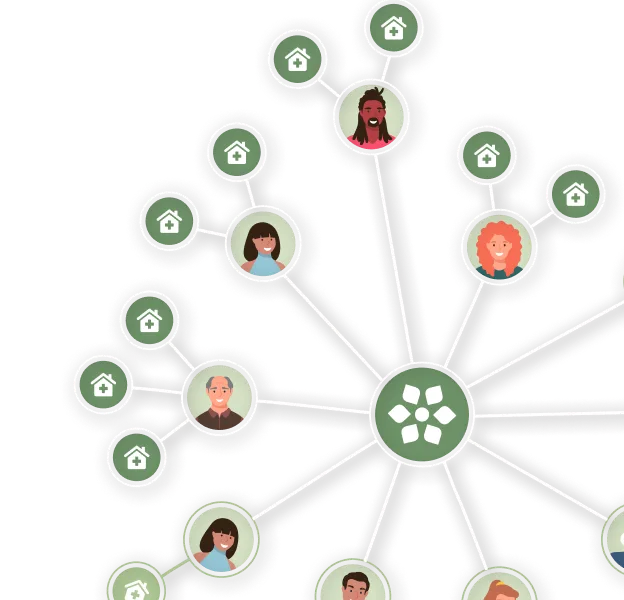How Does Myeloma Decision-Making Differ by Patient Age?

Making myeloma decisions as a relapsed or refractory multiple myeloma patient is not an easy task. Determining next steps in care will depend on multiple factors, including the aggressiveness of the disease, treatments that have already been used, and the FDA-approved guidelines for the use of newer therapies.
With all of these factors in mind, how does age play a role in making decisions?
HealthTree Foundation conducted a decision-making survey of 289 patients using the HealthTree Cure Hub Registry, a patient-driven platform that enables individuals to share clinical insights, connect with other patients, navigate their disease journey, and contribute to research. A goal of the study was to evaluate the use of educational resources based on age.
Patients were separated into two age groups: 18-65 and over 65. The older group had a slightly higher level of education compared to the younger group.
Differences in Decision-Making by Age
-
Webinars and Official Guidelines: Older patients relied more heavily on webinars and official guides such as the National Comprehensive Cancer Network (NCCN), the American Society of Clinical Oncology (ASCO) recommendations, and the Mayo Stratification for Myeloma and Risk-Adapted Therapy (mSMART) methodology as they underwent subsequent changes in therapy. This engagement increased over time as patients continued their myeloma journey.
-
Printed Pharma Materials: The older group was more likely to use pamphlets (printed or PDF) created by pharmaceutical companies compared to the younger group. This difference diminished as both age groups underwent multiple therapy changes, both lowering their use of printed pharmaceutical materials over time.
-
Social Media Utilization: Older patients over 65 were significantly less likely to use social media sources for education (posts that included non-myeloma experts). Notably, 69% of the older cohort reported never using this type of social media, whereas only 44% of the younger cohort had never used it.
-
Reliance on Personal Networks: Younger patients under 65 were more likely to consult family members, friends, or loved ones when making treatment decisions.
-
Use of Medical Journal Articles: Younger patients showed an increasing trend in their use of medical journal articles over time, suggesting that younger patients are seeking out medical literature to inform their decisions.
Patients of all ages use a diverse set of resources to become educated about multiple myeloma. While older patients gravitate towards structured, expert-led education, younger patients rely on interactive and scientific sources. The varied approaches highlight the need for the development of varied educational sources.
HealthTree seeks to provide these various types of educational resources in our news, live roundtable meetings and webinars, HealthTree University video curriculum, multimedia patient guides, and HealthTree Connect social media platform.
We invite you to utilize these free resources to help you make informed decisions for an optimal outcome.
Source:
Making myeloma decisions as a relapsed or refractory multiple myeloma patient is not an easy task. Determining next steps in care will depend on multiple factors, including the aggressiveness of the disease, treatments that have already been used, and the FDA-approved guidelines for the use of newer therapies.
With all of these factors in mind, how does age play a role in making decisions?
HealthTree Foundation conducted a decision-making survey of 289 patients using the HealthTree Cure Hub Registry, a patient-driven platform that enables individuals to share clinical insights, connect with other patients, navigate their disease journey, and contribute to research. A goal of the study was to evaluate the use of educational resources based on age.
Patients were separated into two age groups: 18-65 and over 65. The older group had a slightly higher level of education compared to the younger group.
Differences in Decision-Making by Age
-
Webinars and Official Guidelines: Older patients relied more heavily on webinars and official guides such as the National Comprehensive Cancer Network (NCCN), the American Society of Clinical Oncology (ASCO) recommendations, and the Mayo Stratification for Myeloma and Risk-Adapted Therapy (mSMART) methodology as they underwent subsequent changes in therapy. This engagement increased over time as patients continued their myeloma journey.
-
Printed Pharma Materials: The older group was more likely to use pamphlets (printed or PDF) created by pharmaceutical companies compared to the younger group. This difference diminished as both age groups underwent multiple therapy changes, both lowering their use of printed pharmaceutical materials over time.
-
Social Media Utilization: Older patients over 65 were significantly less likely to use social media sources for education (posts that included non-myeloma experts). Notably, 69% of the older cohort reported never using this type of social media, whereas only 44% of the younger cohort had never used it.
-
Reliance on Personal Networks: Younger patients under 65 were more likely to consult family members, friends, or loved ones when making treatment decisions.
-
Use of Medical Journal Articles: Younger patients showed an increasing trend in their use of medical journal articles over time, suggesting that younger patients are seeking out medical literature to inform their decisions.
Patients of all ages use a diverse set of resources to become educated about multiple myeloma. While older patients gravitate towards structured, expert-led education, younger patients rely on interactive and scientific sources. The varied approaches highlight the need for the development of varied educational sources.
HealthTree seeks to provide these various types of educational resources in our news, live roundtable meetings and webinars, HealthTree University video curriculum, multimedia patient guides, and HealthTree Connect social media platform.
We invite you to utilize these free resources to help you make informed decisions for an optimal outcome.
Source:
about the author
Jennifer Ahlstrom
Myeloma survivor, patient advocate, wife, mom of 6. Believer that patients can contribute to cures by joining HealthTree Cure Hub and joining clinical research. Founder and CEO of HealthTree Foundation.
More on HealthTree Research
Get the Latest Blood Cancer Updates, Delivered to You.
By subscribing to the HealthTree newsletter, you'll receive the latest research, treatment updates, and expert insights to help you navigate your health.














